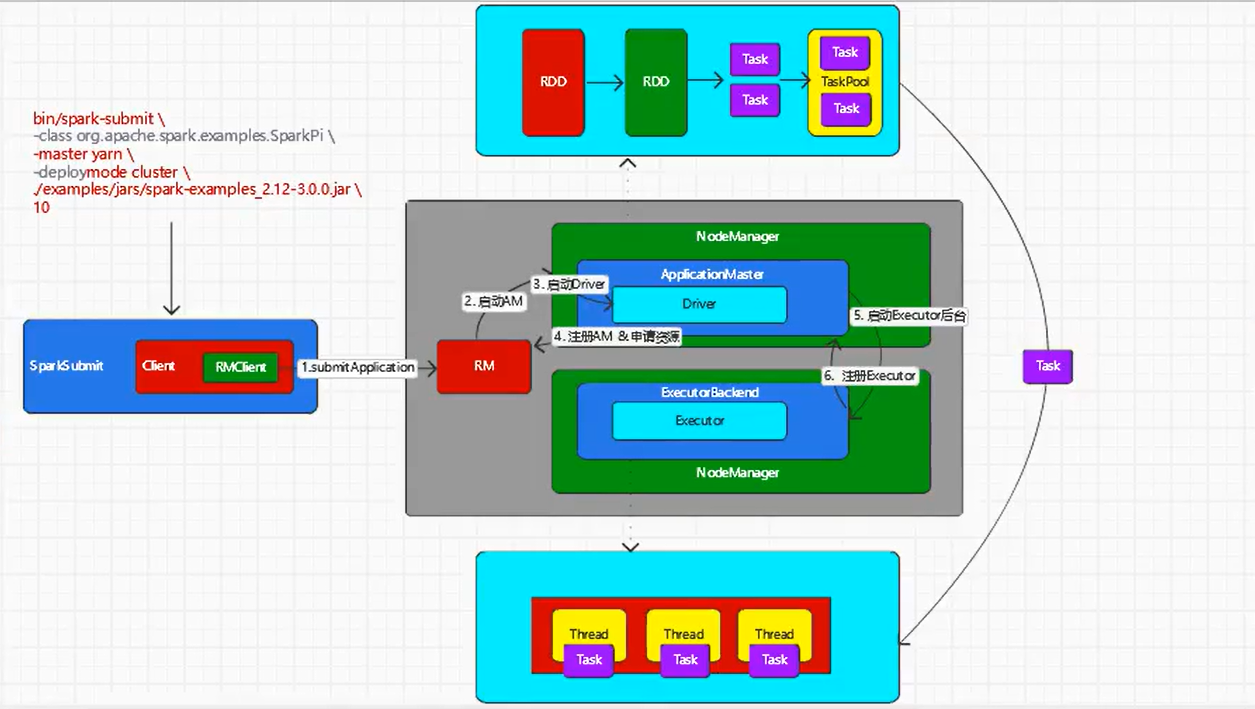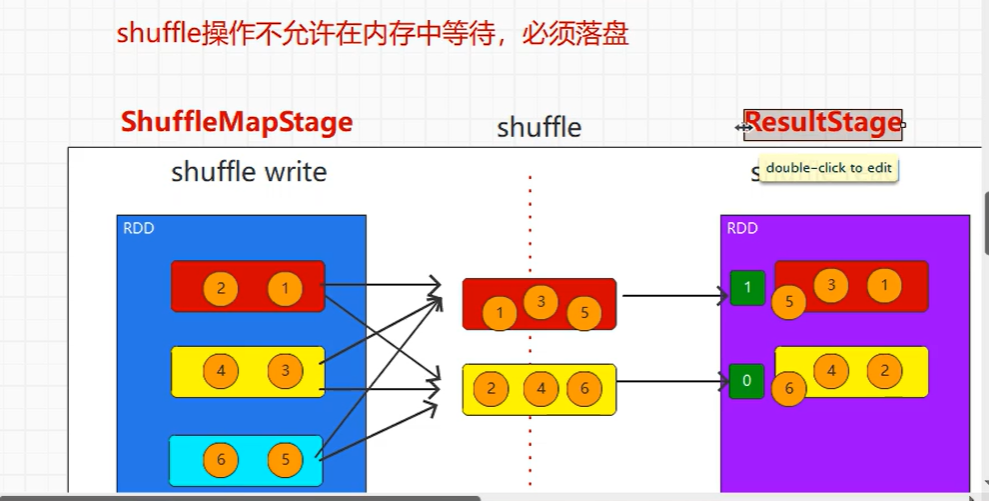YarnCoarseGrainedExecutorBackend源码分析
YarnCoarseGrainedExecutorBackend源码分析
我们在applicationMaster中,发现他从rm申请了容器列表,经过一番筛选,遍历需要的容器然后联系nm去启动容器,在容器中又发现了他又开启了一个java线程,启动了YarnCoarseGrainedExecutorBackend,所以我们又来看看YarnCoarseGrainedExecutorBackend在做什么操作。
--main
-- CoarseGrainedExecutorBackend.run(backendArgs, createFn)
// 创建执行的环境
-- val env = SparkEnv.createExecutorEnv(
driverConf, executorId, hostname, port, cores, cfg.ioEncryptionKey, isLocal = false)
// 创建一个通信终端ExecutorBackend
-- env.rpcEnv.setupEndpoint("Executor", new CoarseGrainedExecutorBackend(
env.rpcEnv, driverUrl, executorId, hostname, cores, userClassPath, env))
// 发送
-- ref.ask[Boolean](RegisterExecutor(executorId, self, hostname, cores, extractLogUrls))
// 收到回复
-- case Success(msg) =>
// Always receive `true`. Just ignore it
case Failure(e) =>
exitExecutor(1, s"Cannot register with driver: $driverUrl", e, notifyDriver = false)
//创建executor对象
-- executor = new Executor(executorId, hostname, env, userClassPath, isLocal = false)
// 执行driver发送过来的task
-- LaunchTask(data)
//解码
-- val taskDesc = TaskDescription.decode(data.value)
// 准备计算
-- executor.launchTask(this, taskDesc)
// 创建一个执行线程 把他添加到线程池中
-- val tr = new TaskRunner(context, taskDescription)
runningTasks.put(taskDescription.taskId, tr)
//执行 会找到task的run方法
threadPool.execute(tr)
// spark的两个阶段,ShuffleMapTask写盘,ResultTask读盘
-- ShuffleMapTask.runTask()
-- dep.shuffleWriterProcessor.write(rdd, dep, mapId, context, partition)
-- ResultTask.runTask()
-- SparkEnv.get.shuffleManager.getReader(dep.shuffleHandle, split.index, split.index + 1, context).read()
CoarseGrainedSchedulerBackend (Driver)接收且答复
receiveAndReply
-- addressToExecutorId(executorAddress) = executorId
-- totalCoreCount.addAndGet(cores)
-- totalRegisteredExecutors.addAndGet(1)
-- executorRef.send(RegisteredExecutor)
// Note: some tests expect the reply to come after we put the executor in the map
-- context.reply(true)
-- makeOffers()
-- launchTasks(scheduler.resourceOffers(workOffers))
// 任务的序列化
-- val serializedTask = ser.serialize(task)
// 把序列化的任务发送给executorbackend
-- executorData.executorEndpoint.send(LaunchTask(new SerializableBuffer(serializedTask)))


Q:task在executor中是怎么执行的?
stage match {
case stage: ShuffleMapStage =>
stage.pendingPartitions.clear()
partitionsToCompute.map { id =>
val locs = taskIdToLocations(id)
val part = partitions(id)
stage.pendingPartitions += id
new ShuffleMapTask(stage.id, stage.latestInfo.attemptNumber,
taskBinary, part, locs, properties, serializedTaskMetrics, Option(jobId),
Option(sc.applicationId), sc.applicationAttemptId, stage.rdd.isBarrier())
}
case stage: ResultStage =>
partitionsToCompute.map { id =>
val p: Int = stage.partitions(id)
val part = partitions(p)
val locs = taskIdToLocations(id)
new ResultTask(stage.id, stage.latestInfo.attemptNumber,
taskBinary, part, locs, id, properties, serializedTaskMetrics,
Option(jobId), Option(sc.applicationId), sc.applicationAttemptId,
stage.rdd.isBarrier())
}


 浙公网安备 33010602011771号
浙公网安备 33010602011771号